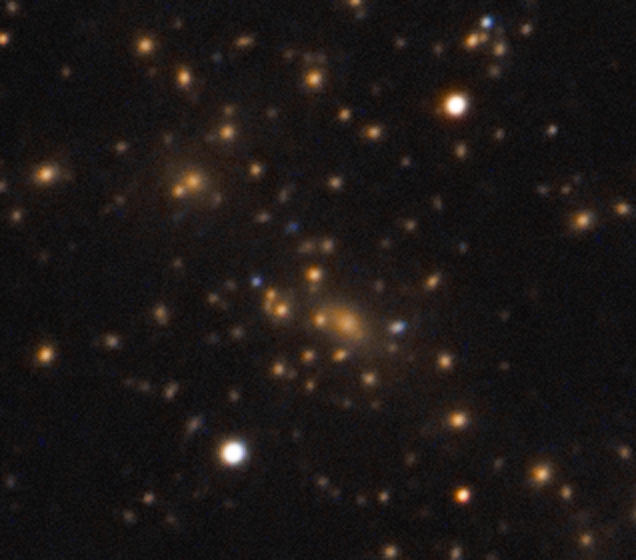|
|

Center of the cluster at 200%
resolution.
Mouse-Over shows the Hubble
resolved gravitational lenses.
Credit: ESA, NASA, J.-P. Kneib
(Caltech/Observatoire Midi-Pyrenees) & R. Ellis (Caltech)
|
Instrument |
12.5" RCOS @
~f/9 (2880 mm fl) 0.64 arcsec / pixel. The Zoomify image scale
is 0.64 to 3.59 arcsec / pixel. |
|
Mount |
Paramount ME |
|
Camera |
SBIG STL-11000 w/ internal filter wheel, AstroDon Gen II Filters |
|
Acquisition Data |
5/28/2012 to 6/24/2012 Chino Valley, AZ... with CCDAutoPilot3
& CCDSoft. AOL guided |
|
Exposure |
|
Lum |
450 min. (15
x 30 min. bin 1x1 - best of 20) |
|
RGB |
900 min. (20 x
15 min. each, bin 2x2) |
|
|
Software |
-
CCDSoft, CCDStack,
Photoshop CS3 w/ the Fits Liberator plugin.
-
eXcalibrator v3.1 (g-r) color balancing, using 68 stars
from the SDSS-DR8 database.
-
PixFix32 (pre-beta) to
repair column defects.
-
CCDBand-Aid (pre-beta) to repair the
STL-11000M vertical bars.
-
CCDStack to calibrate,
register, normalize, data reject, combine the sub exposures,
and
the RGB color image.
-
PhotoShop
none-linear stretching
and the LRGB combine.
-
Noiseware Pro, a PhotoShop plug-in.
|
|
Comment |
North is to the right.
Abell 2218 is a cluster of galaxies about 2 billion light-years away
in the constellation Draco. Because the cluster is so massive and
compact its gravity bends and focuses the light from galaxies far
behind it. As a result, multiple images of these background galaxies
are distorted into long faint arcs. This effect, called
"gravitational lensing", was predicted by Einstein and allows
astronomers to see galaxies at great distances.
The above mouse-over image shows that only a few of the distant
galaxy arcs were very faintly resolved with the Focal Pointe
Observatory 12.5 inch f/9 optics.
|
|

